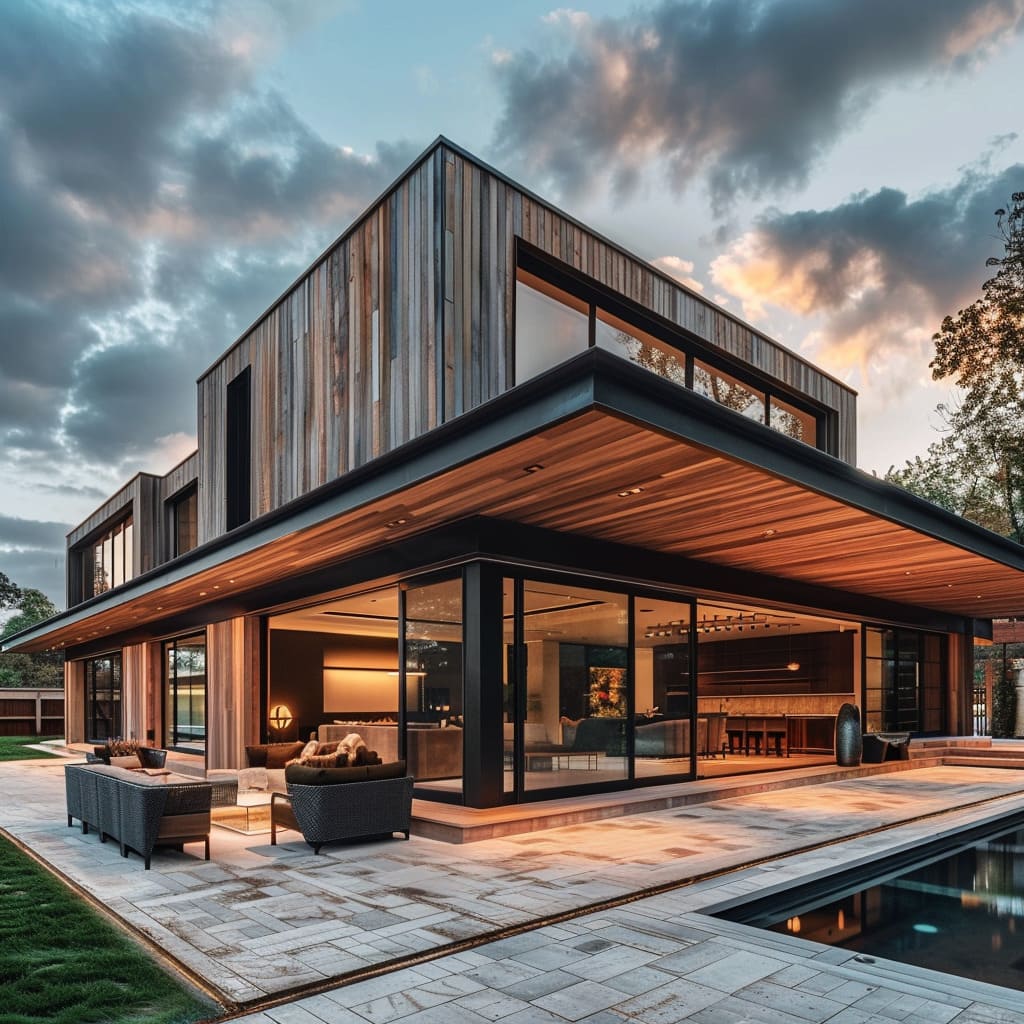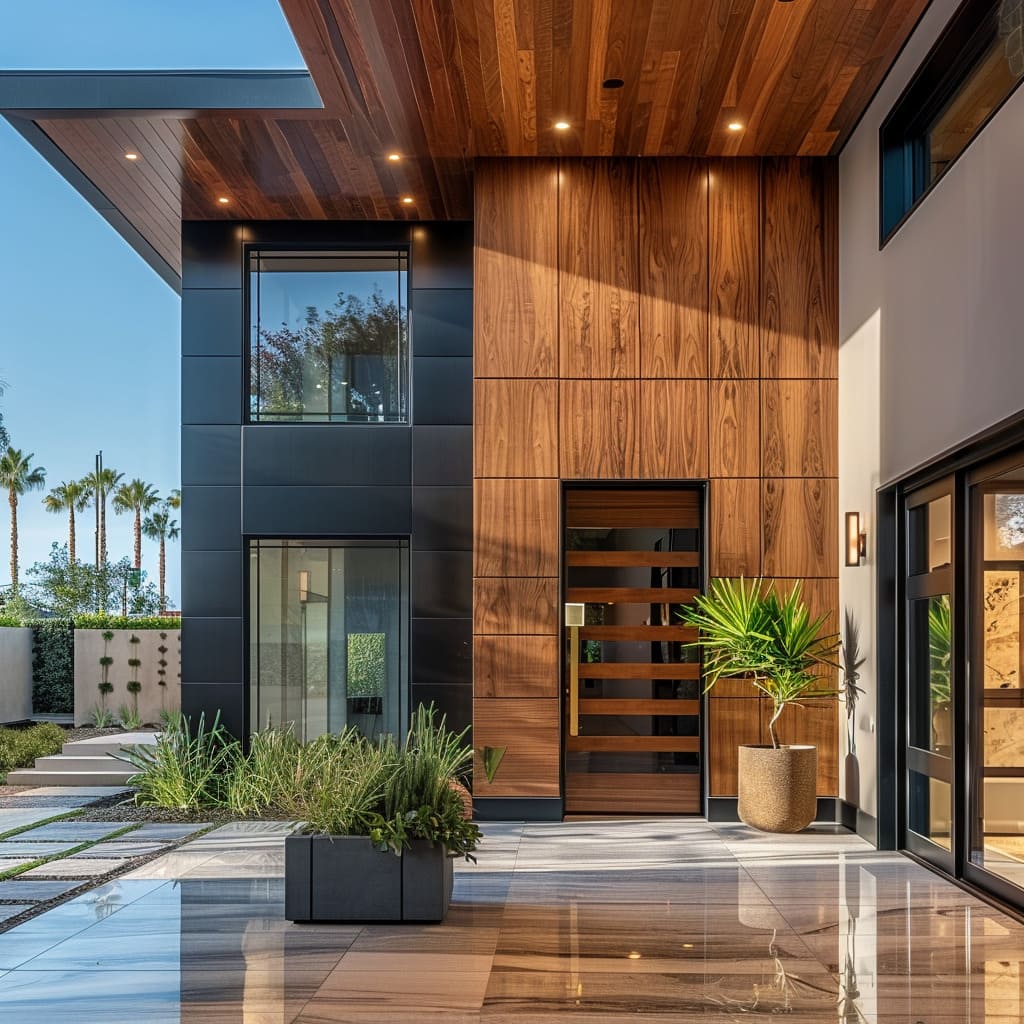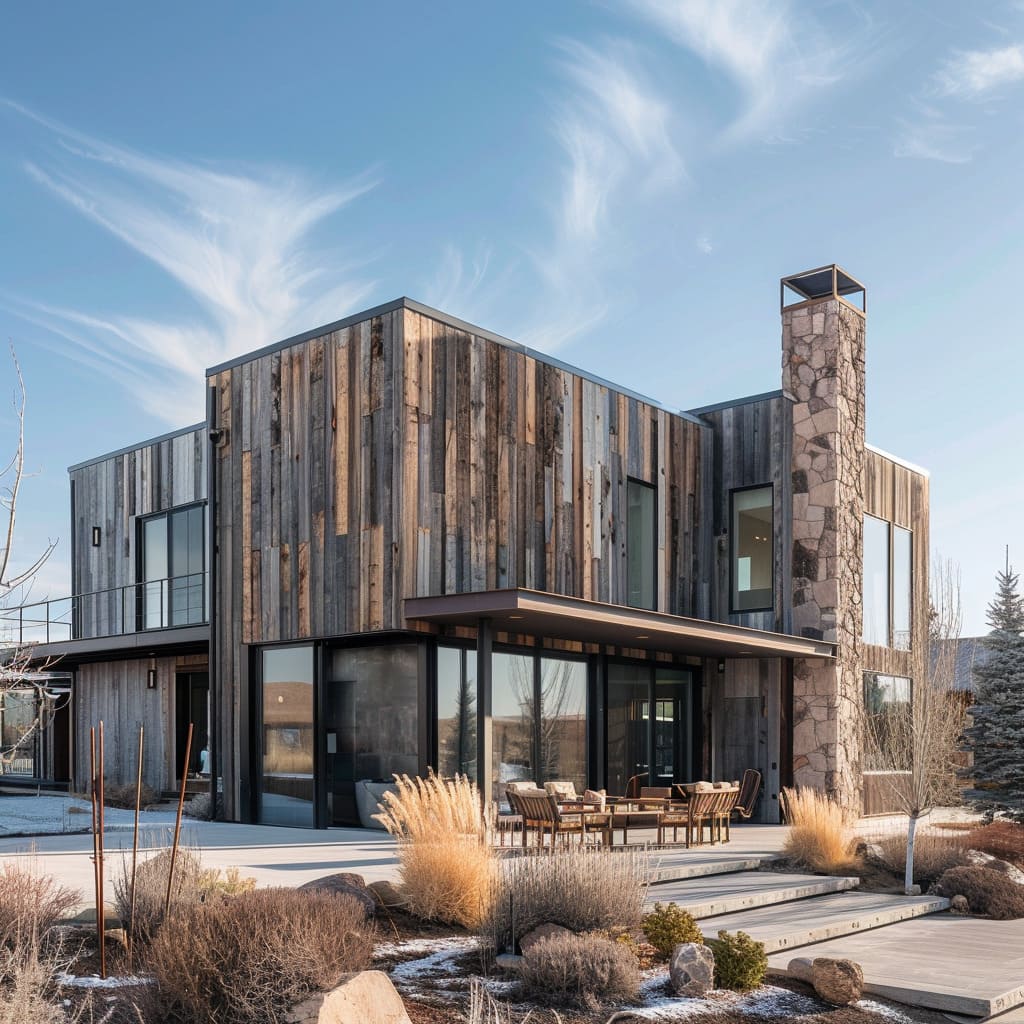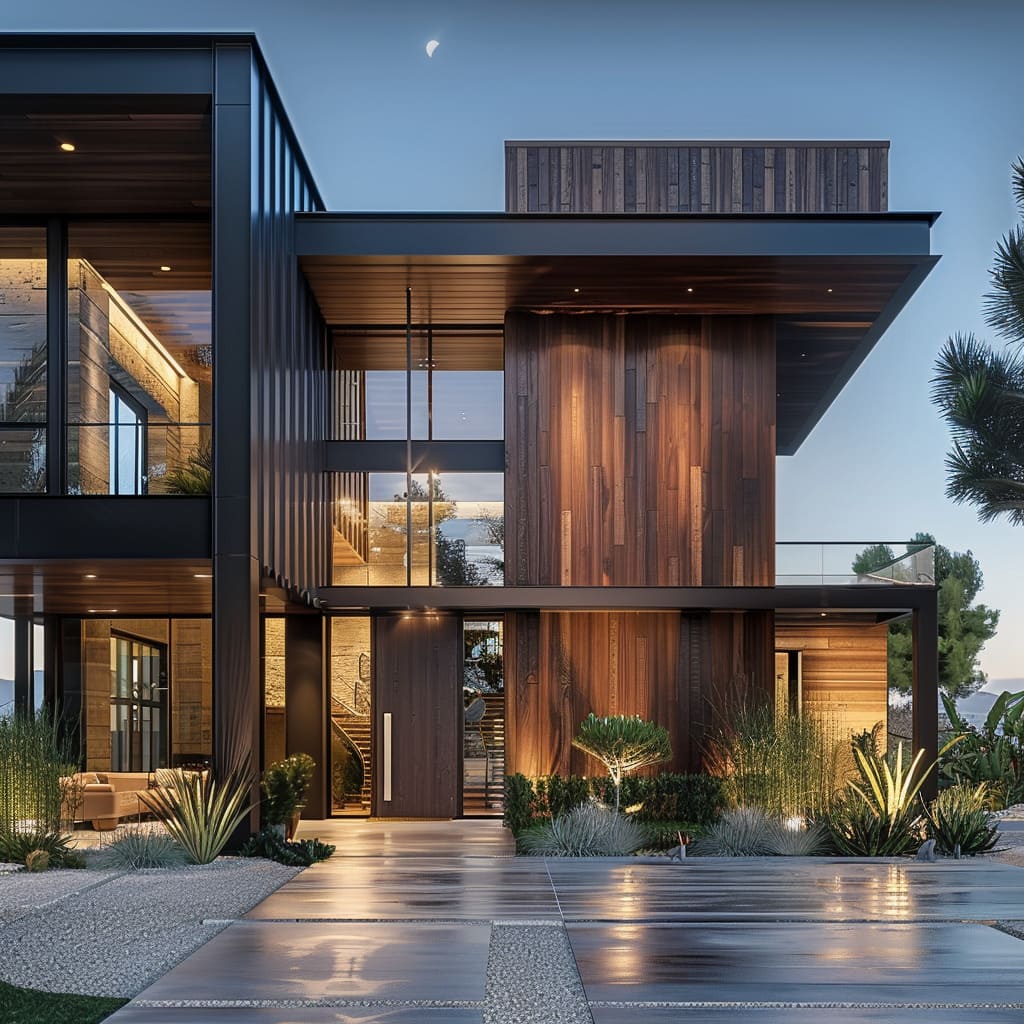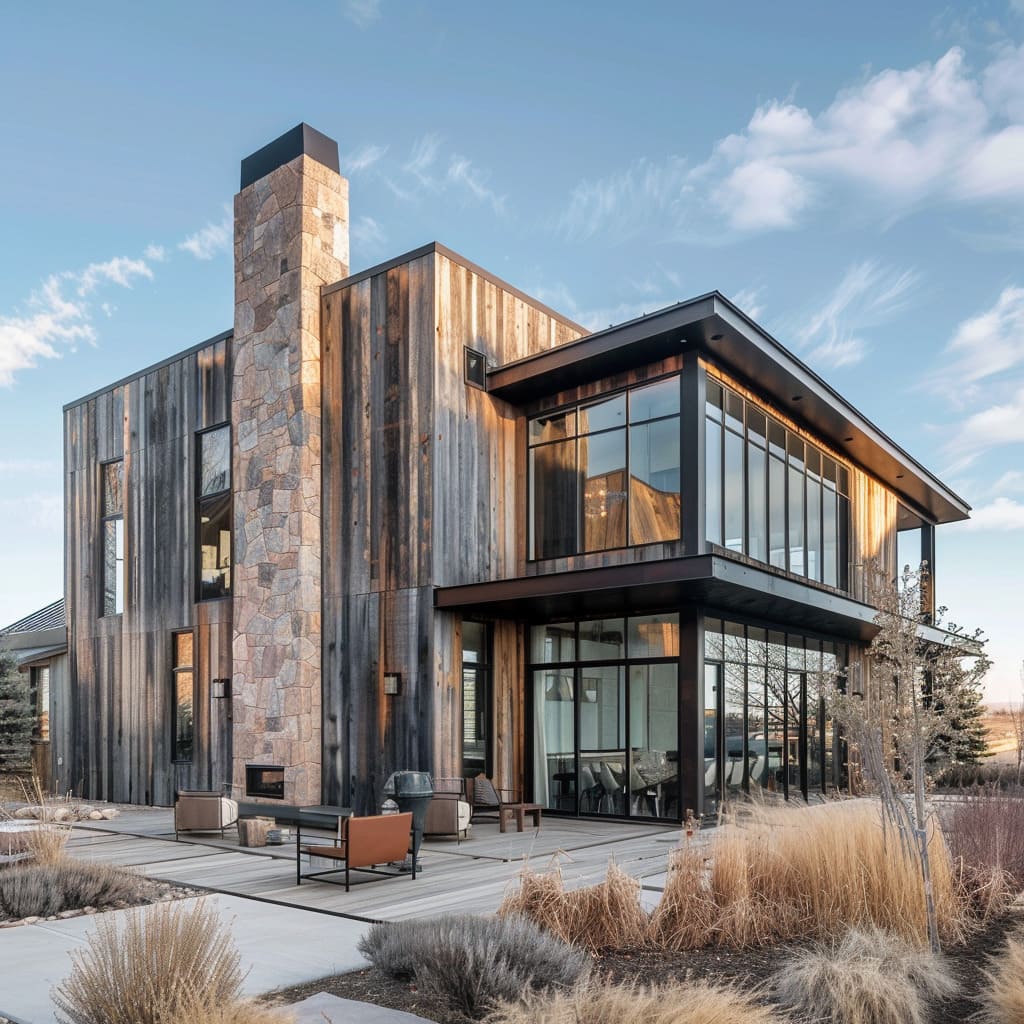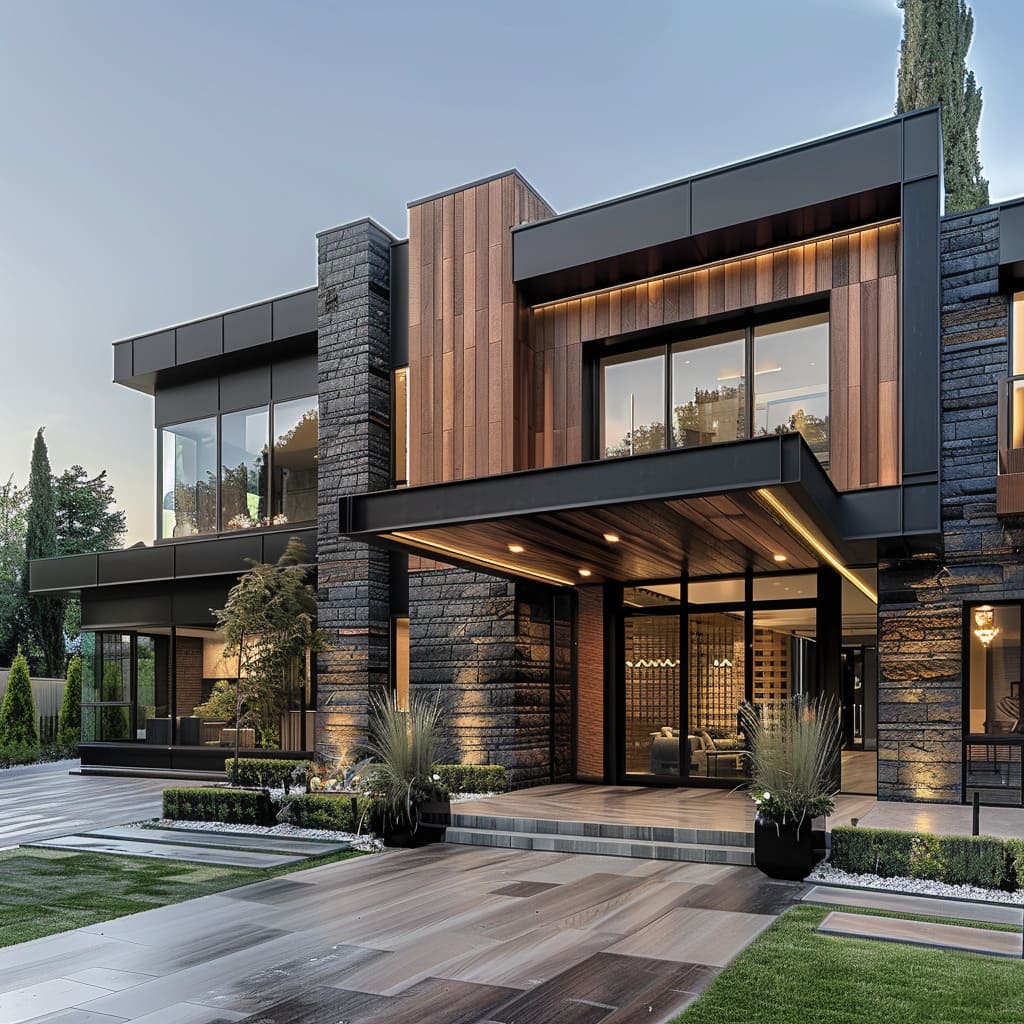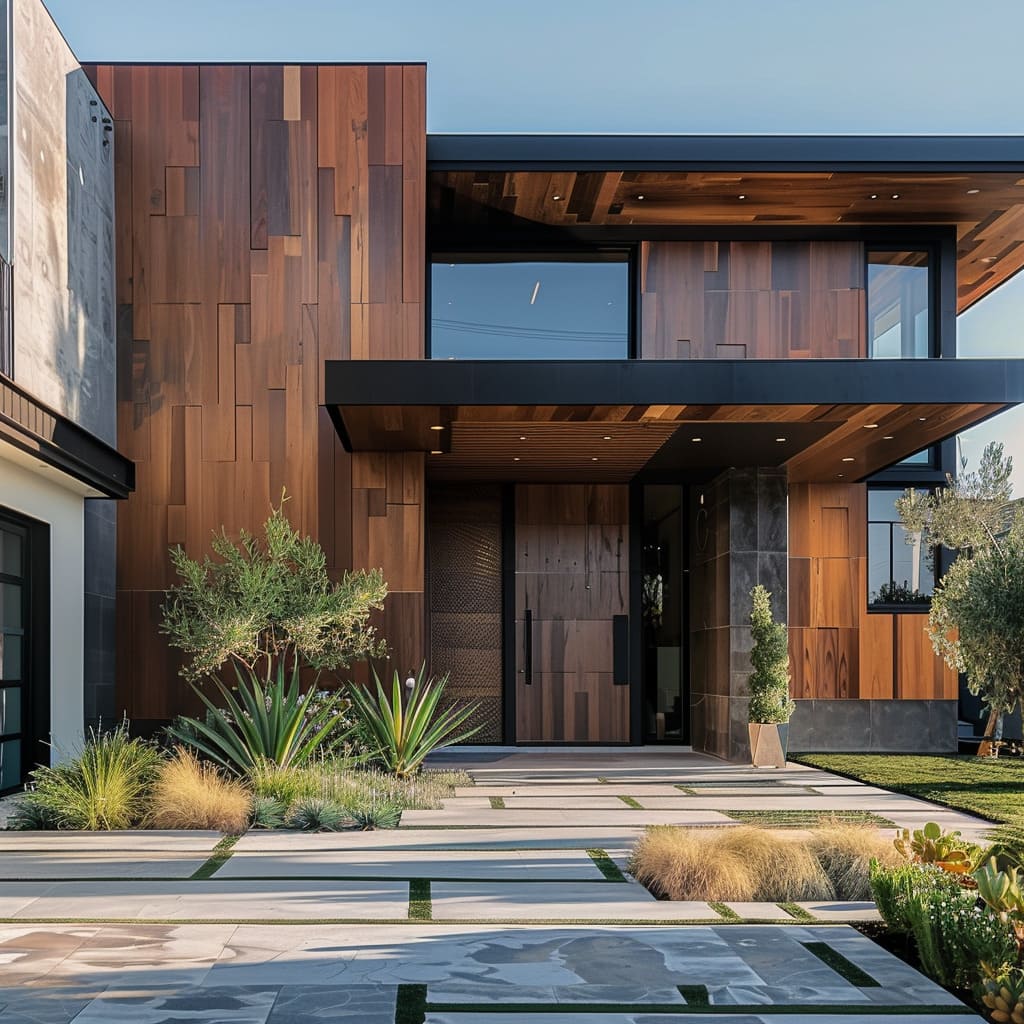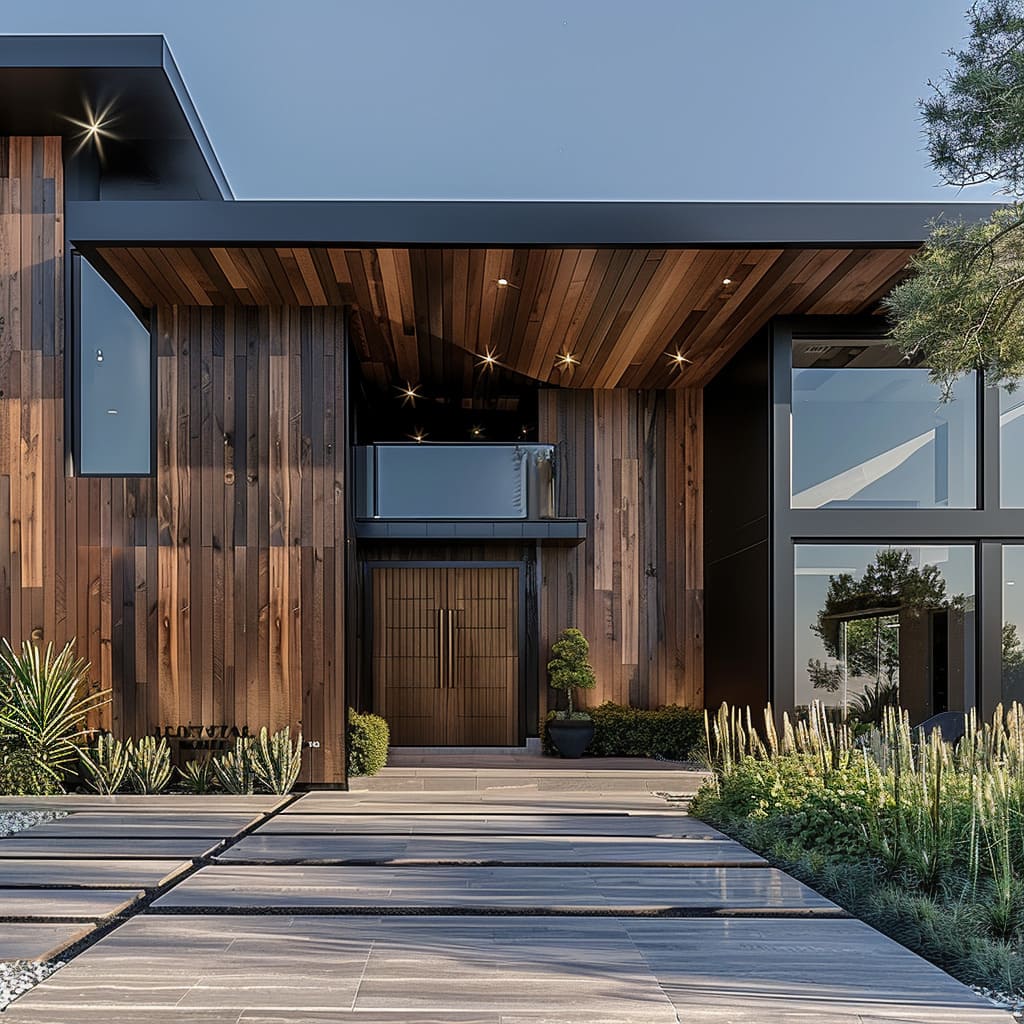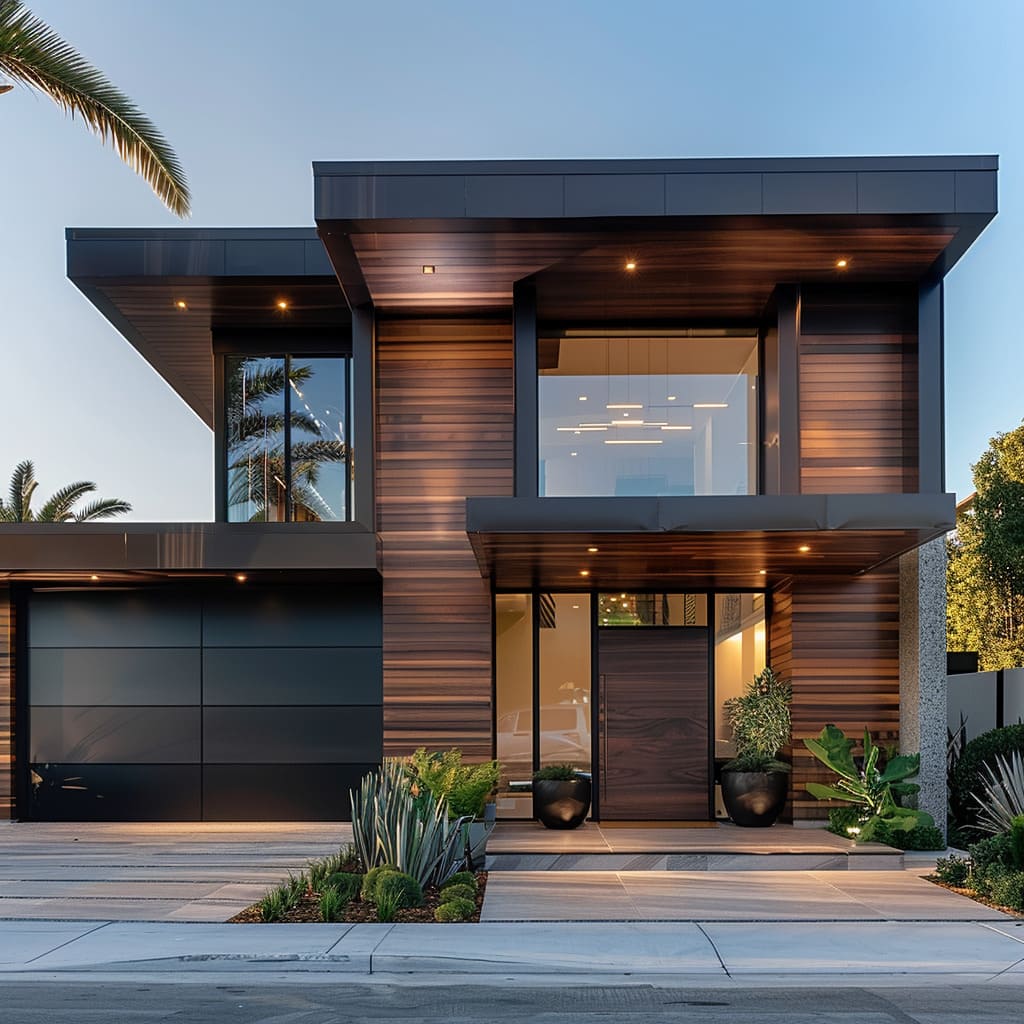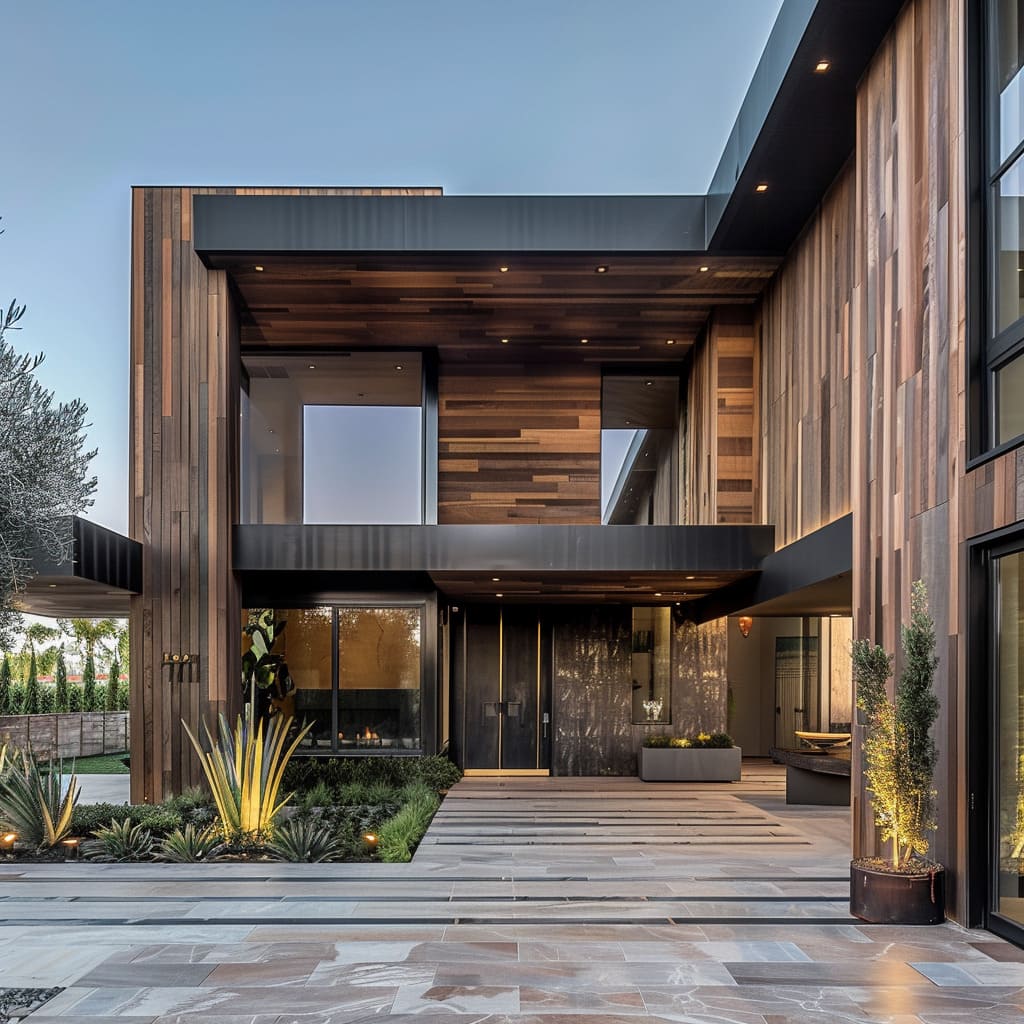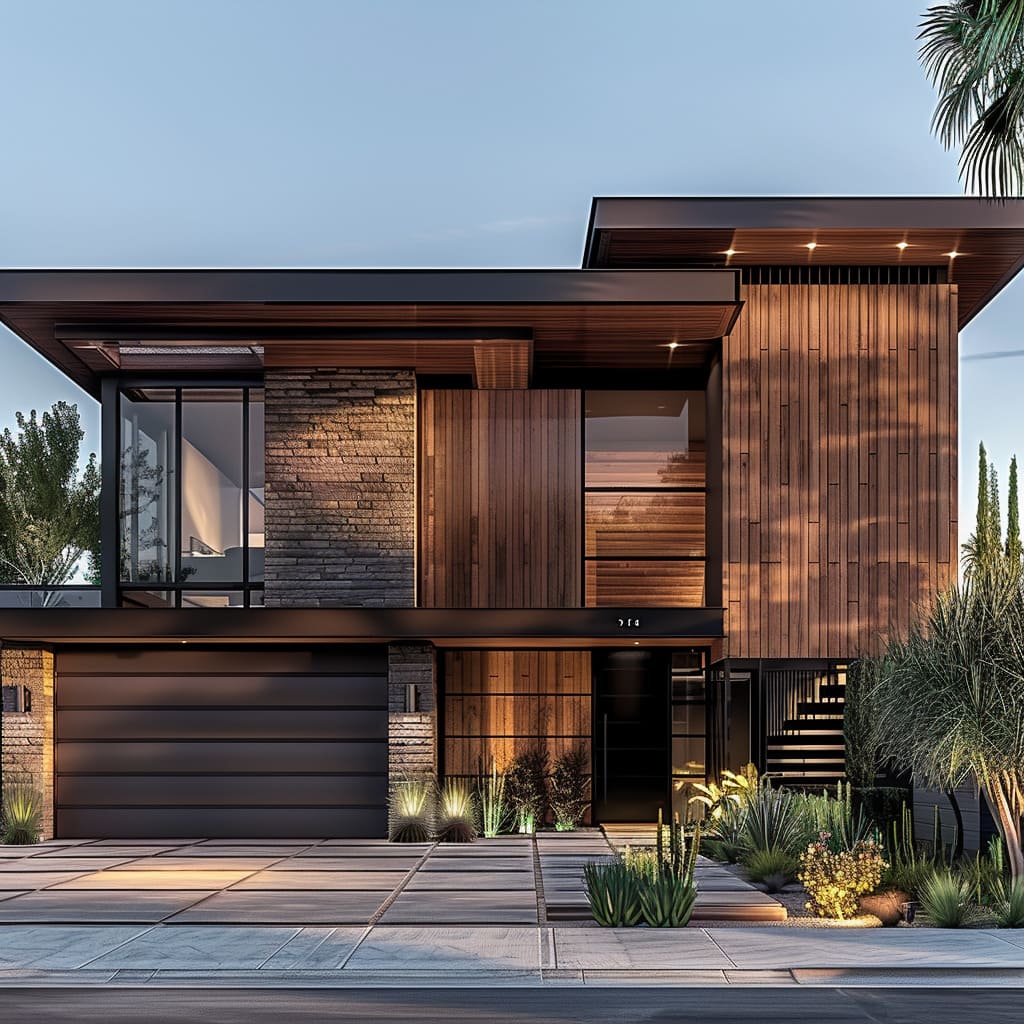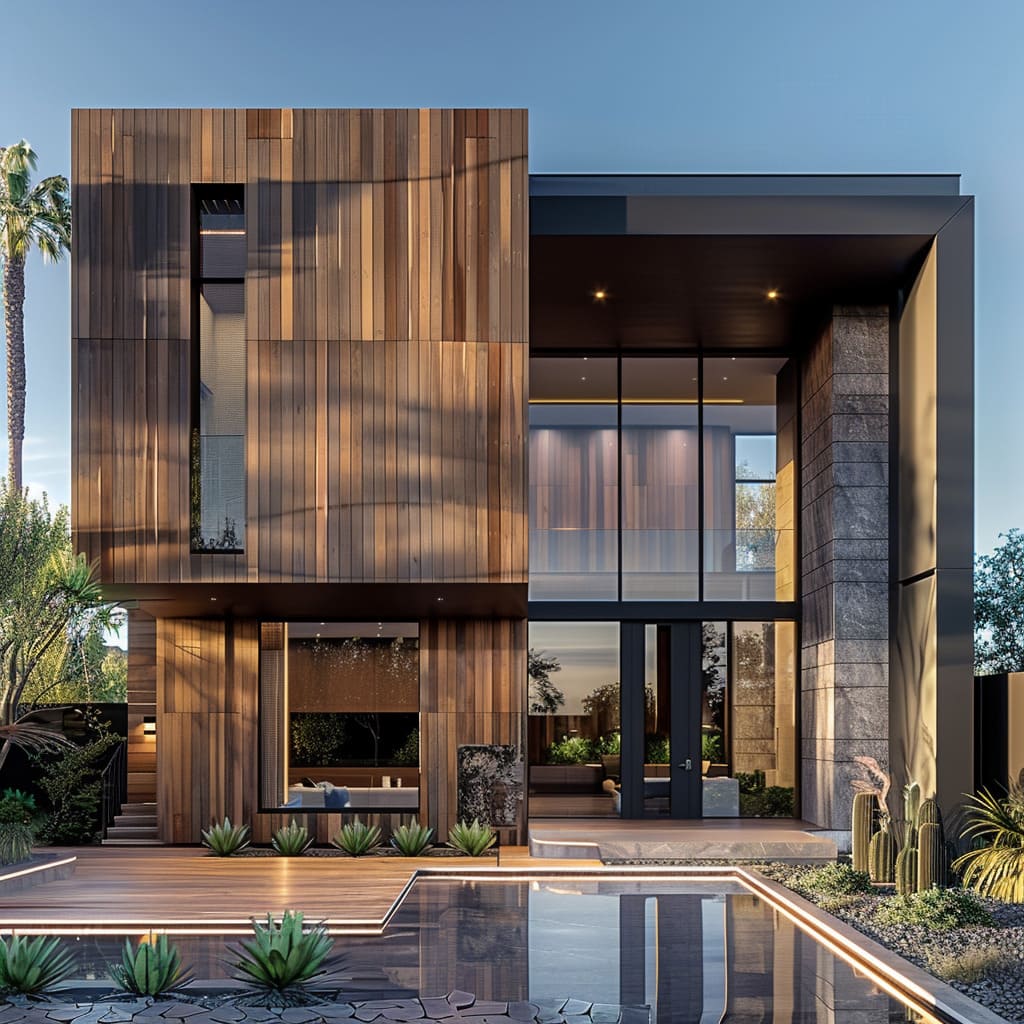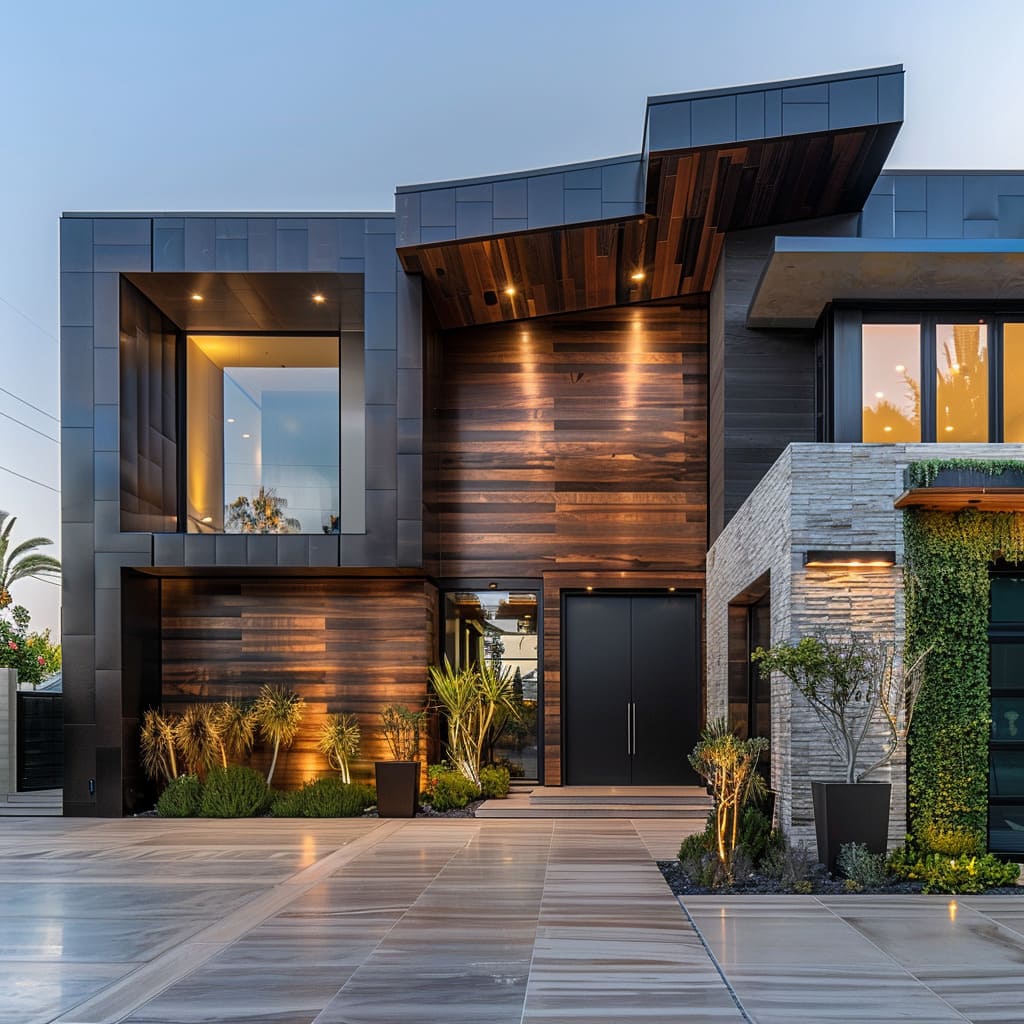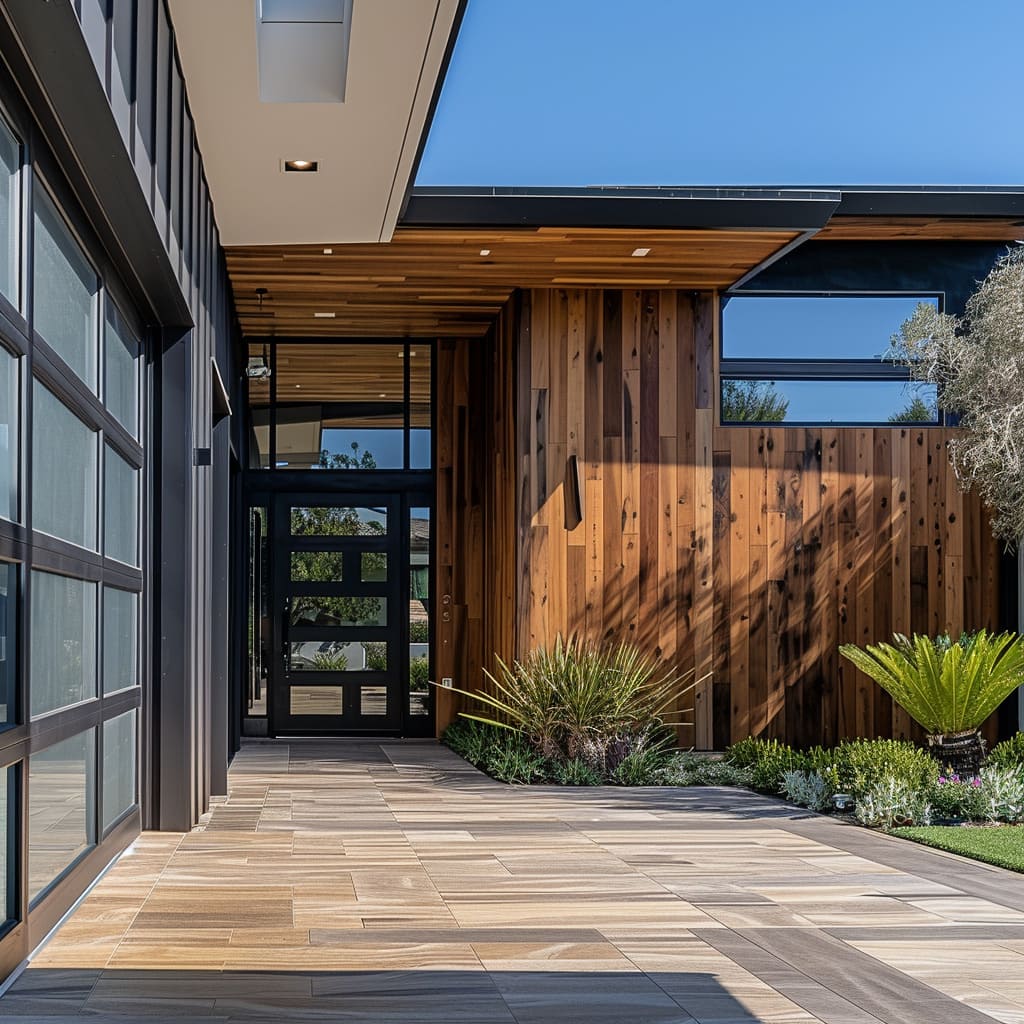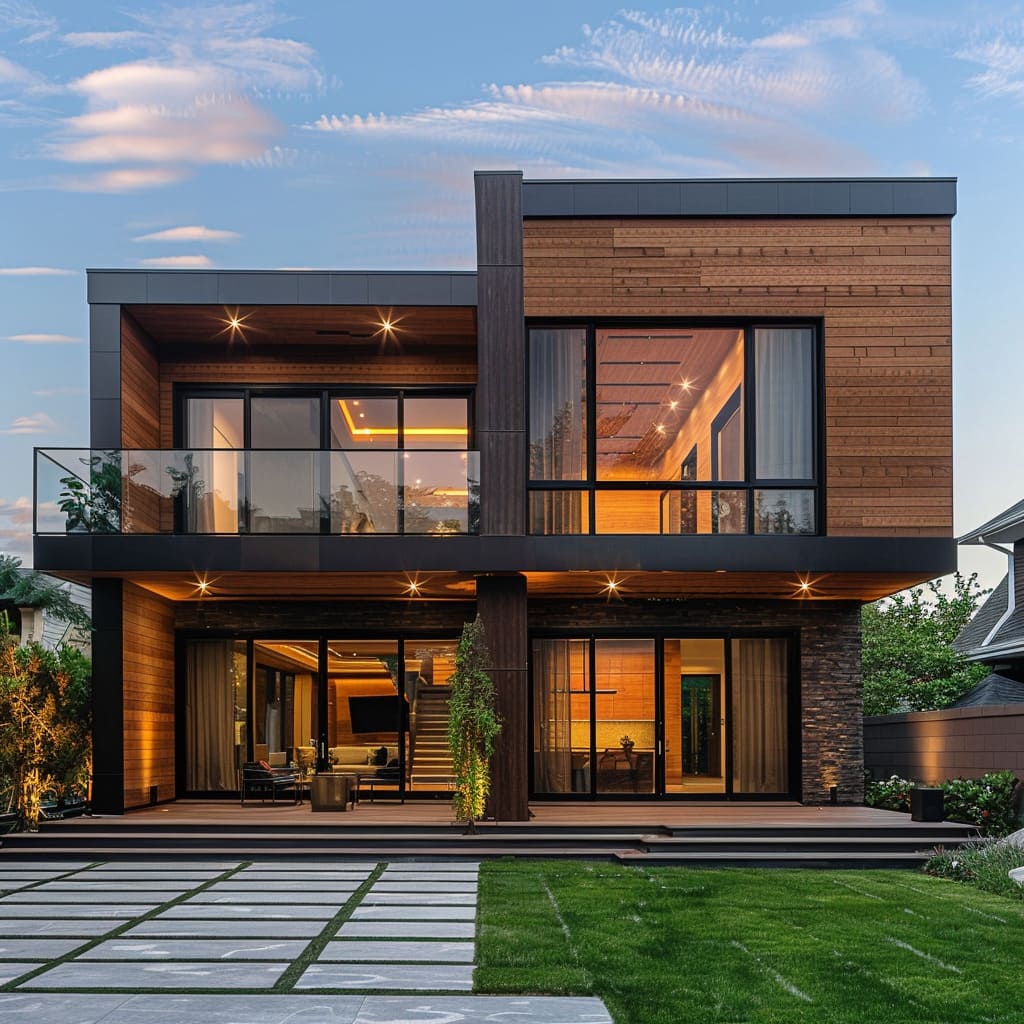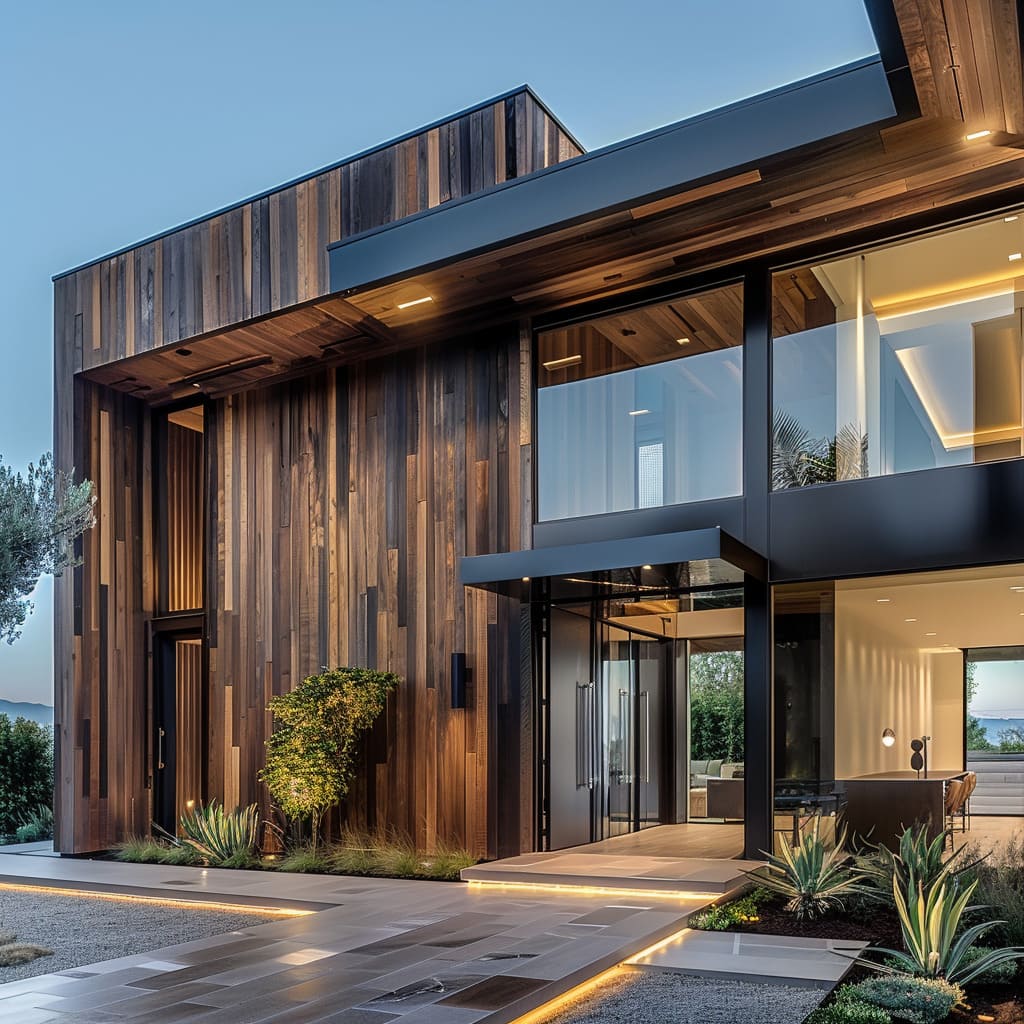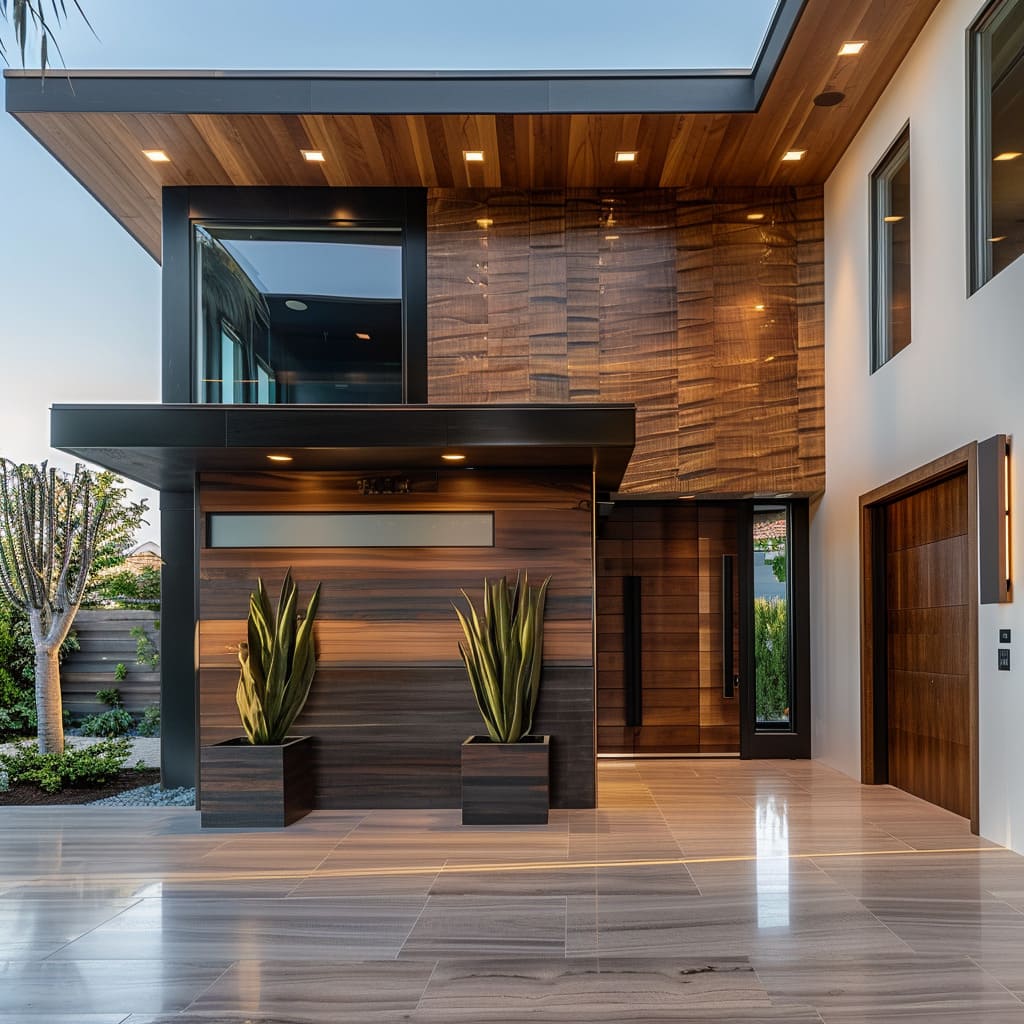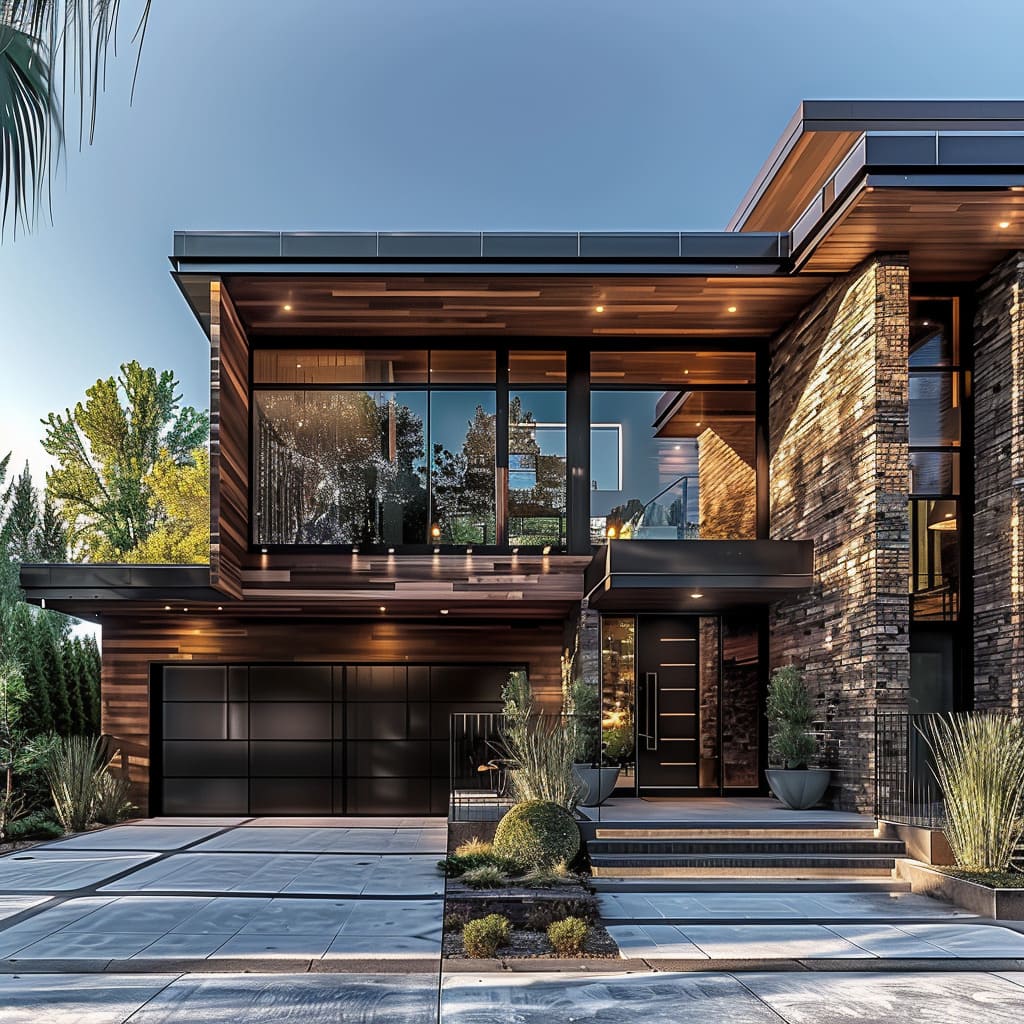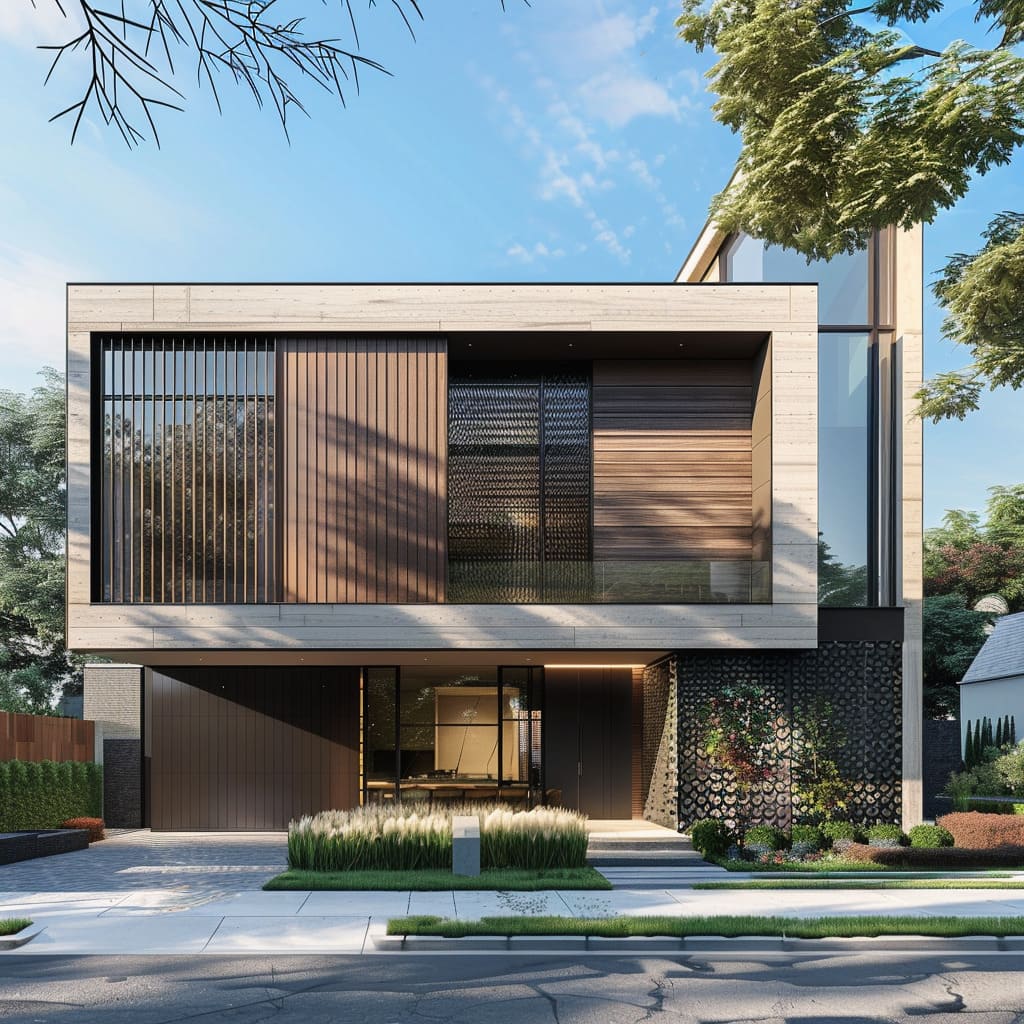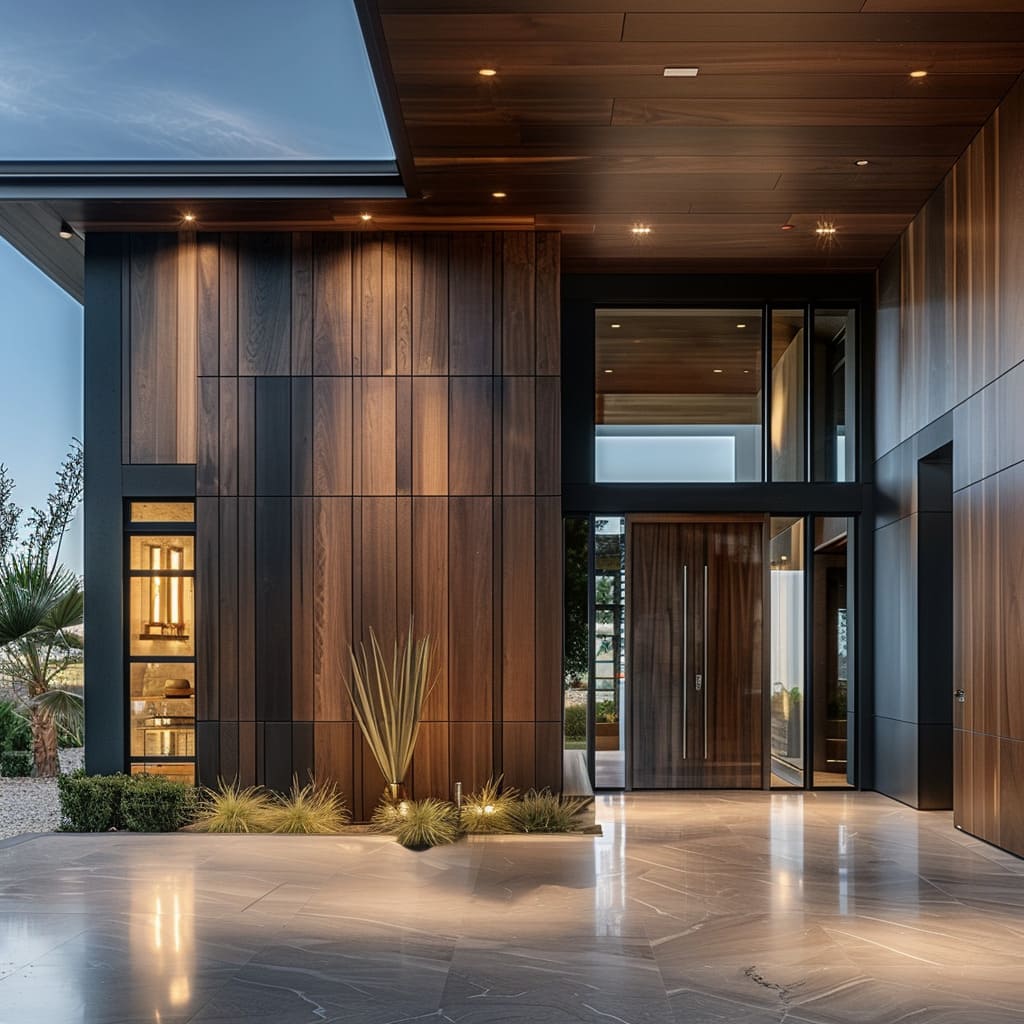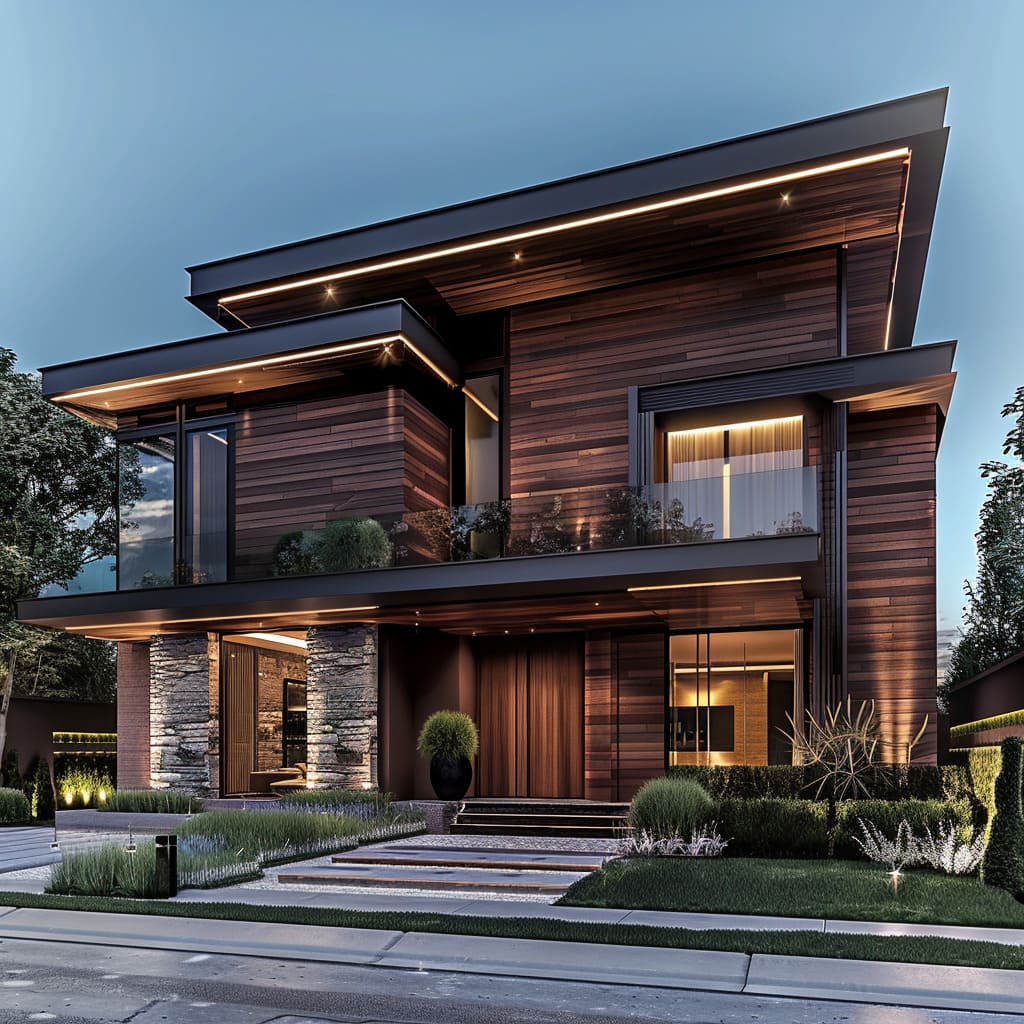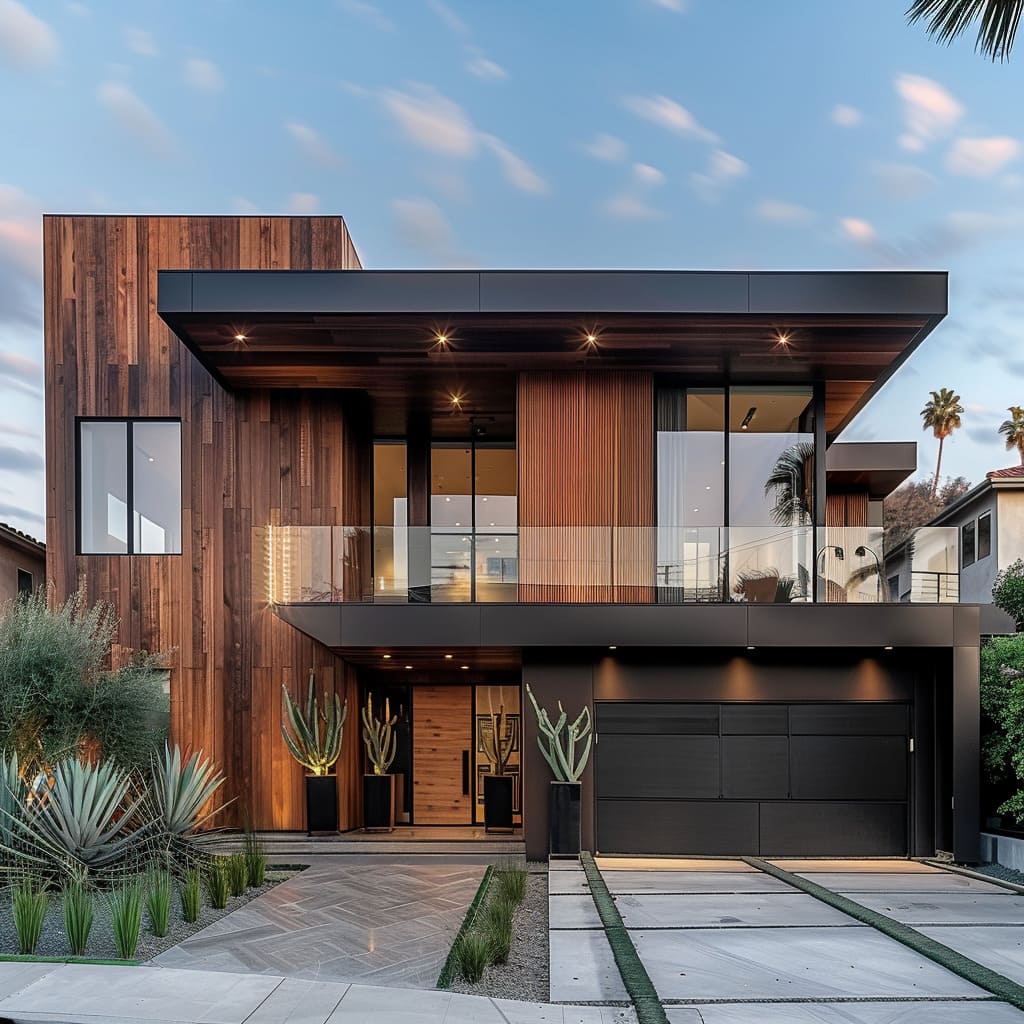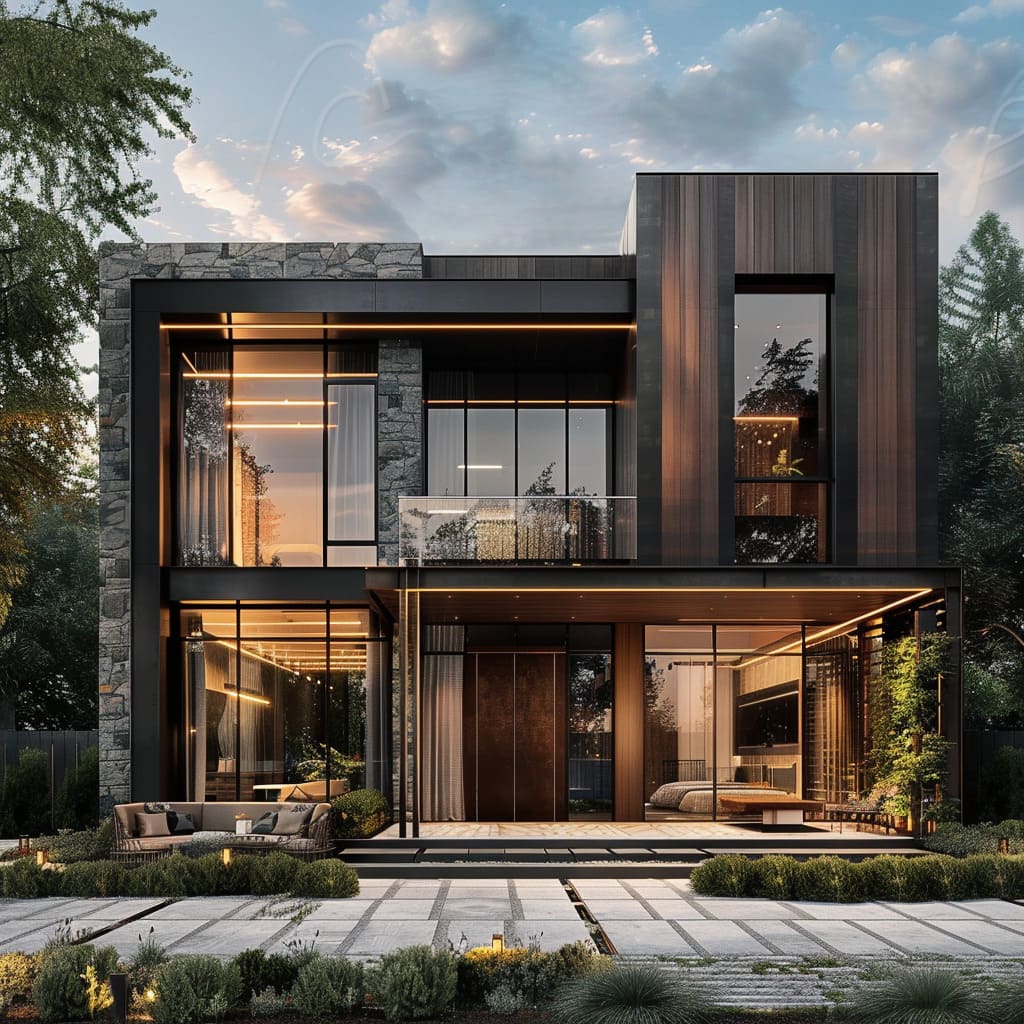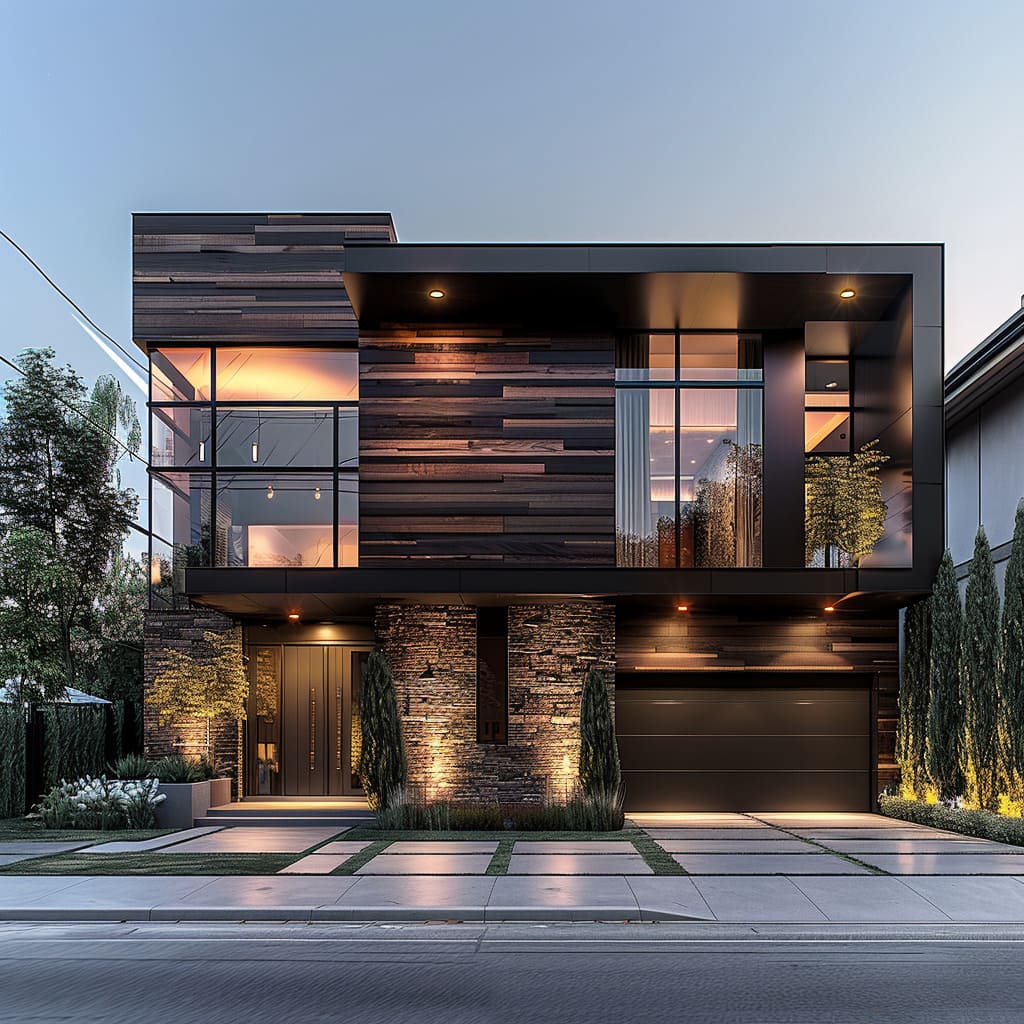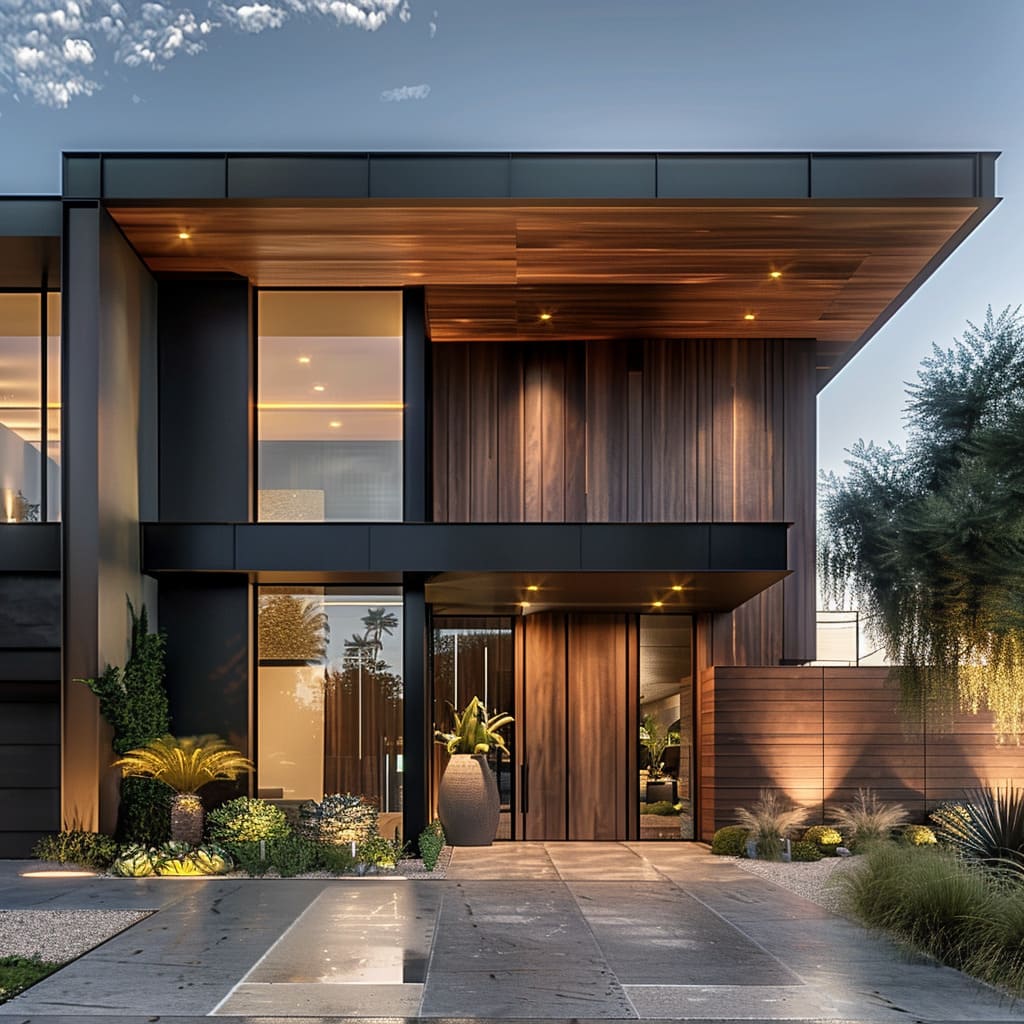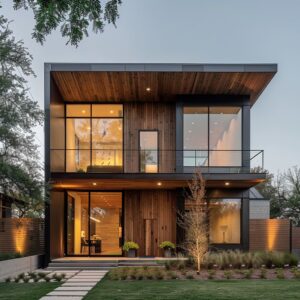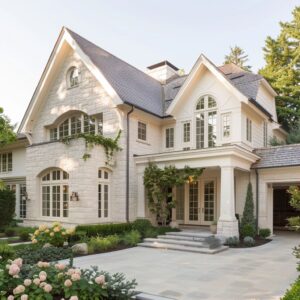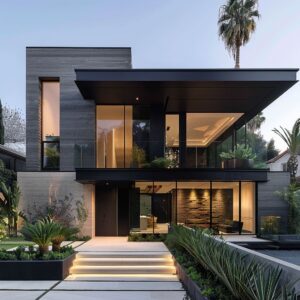Contemporary house architecture embraces a harmonious blend of aesthetics and functionality, marked by clean lines, open spaces, and an emphasis on natural light. One of the most striking aspects of this style is the innovative use of materials.
Wood, metal, and glass are often combined to create stunning homes that are both modern and inviting. These materials bring together the natural warmth of wood, the sleekness of metal, and the transparency of glass to achieve an architectural masterpiece.
General Overview of Contemporary House Architecture
Contemporary architecture is defined by its emphasis on simplicity, open floor plans, and large windows. This style often prioritizes a connection to the outdoors, making the most of natural light and views.
The design aims to create spaces that are flexible, adaptable, and aesthetically pleasing. Key characteristics include flat or low-pitched roofs, large expanses of glass, and a mix of traditional and non-traditional building materials. This approach not only enhances the visual appeal of a home but also improves its functionality and livability.
Materials and Finishes
The choice of materials plays a crucial role in contemporary design. Wood, metal, and glass each bring unique qualities that enhance the overall look and feel of a home.
Wood
Wood is a versatile material that adds warmth and texture to contemporary homes. It is used in various forms, such as cladding, paneling, and accents.
Different types of wood, including cedar, oak, and walnut, offer a range of colors and grains that can complement any design. The natural beauty of wood creates a welcoming atmosphere and contrasts beautifully with the sleekness of metal and glass. Additionally, wood is an excellent insulator, contributing to the energy efficiency of the home.
Metal
Metal is another key material in contemporary architecture, prized for its durability and low maintenance. Steel and aluminum are commonly used for framing, accents, and structural elements. These metals provide a modern edge to the design, creating clean lines and a sleek appearance.
Metal’s strength allows for larger spans and cantilevers, enabling open and airy spaces. The use of metal in window and door frames adds a minimalist touch that enhances the overall aesthetic.
Glass
Glass is a defining feature of contemporary homes, used extensively in windows, doors, and even walls. It allows natural light to flood the interior spaces, creating a bright and airy atmosphere.
Large expanses of glass offer unobstructed views of the outdoors, blurring the lines between inside and out. Various types of glass, such as tempered and laminated, provide safety and insulation while maintaining transparency.
The use of glass in contemporary design not only enhances the visual appeal but also improves the functionality of the home.
Exterior Design Elements
The exterior design of a contemporary home is characterized by its simplicity and clean lines. Every element is carefully considered to create a cohesive and visually appealing facade.
Windows and Doors
Windows and doors are key features in contemporary architecture. Large, floor-to-ceiling windows and sliding glass doors are common, allowing for maximum natural light and a seamless connection to the outdoor spaces. These expansive openings create a sense of openness and fluidity, making the interior spaces feel larger and more connected to nature.
The design often includes minimalist frames in dark metal, which adds a modern touch while maintaining durability.
Lighting
Lighting plays a crucial role in highlighting the architectural features of a contemporary home. Recessed lighting is often used under roof overhangs and along pathways to provide subtle illumination. Accent lighting is strategically placed to showcase key elements such as wood cladding and landscaped areas.
This thoughtful approach to lighting enhances the overall ambiance of the home, making it warm and inviting, especially during the evening.
Roof and Overhangs
Flat or low-pitched roofs are a hallmark of contemporary design, offering a clean and uncluttered silhouette. Overhangs are not just functional but also add to the aesthetic appeal. They provide shade and protection from the elements, improving the energy efficiency of the home.
The underside of the overhangs, often clad in wood, adds warmth and continuity to the design. This detail ties together the various materials used, creating a cohesive look.
Outdoor Spaces and Landscaping
Well-designed outdoor spaces are an integral part of contemporary homes. These areas extend the living space, providing opportunities for relaxation and entertainment.
Entryway Landscaping
The entryway is the first impression of a home, and thoughtful landscaping can make it inviting. Potted plants and ground cover are often used to soften the lines of the structure and add a touch of nature. These elements create a welcoming atmosphere and enhance the visual appeal of the entrance.
Low-lying ground cover plants fill in the spaces around pathways and driveways, adding texture and color to the landscape.
Patios and Seating Areas
Patios are essential outdoor spaces in contemporary homes, designed to extend the living area. They are often paved with large stone tiles that match the pathways, creating a cohesive look. Outdoor furniture, including comfortable chairs and tables, is arranged to provide functional and inviting seating areas.
The design of these spaces complements the overall aesthetic of the home, making them perfect for entertaining or relaxing.
Garden Beds and Landscaping
Garden beds filled with ornamental plants and flowers add visual interest and create a lush, vibrant environment. Raised beds and strategically placed trees provide shade and enhance the natural beauty of the outdoor space. The plants are chosen for their aesthetic appeal and ability to thrive in the local climate.
This thoughtful approach to landscaping ensures that the outdoor areas are not only beautiful but also easy to maintain.
Driveways and Pathways
The design of driveways and pathways is an important aspect of the landscape. Stone pathways lead from the sidewalk to the main entrance and around the house, providing easy access and a structured layout. The pathways are bordered by small shrubs and ground cover plants, adding greenery and softness to the design.
Driveways are often paved with interlocking stone pavers, offering a durable and visually appealing surface. The geometric pattern of the pavers enhances the modern design of the house.
Structural Features
Structural elements in contemporary architecture are both functional and aesthetic, contributing to the overall design and stability of the home.
Columns and Supports
Metal columns are often used in contemporary homes to support upper floors and roof overhangs. These columns are finished in dark metal, adding a sleek, modern look while ensuring structural stability. The open framework of the house, with large windows and glass doors, creates a sense of openness and fluidity between the indoor and outdoor spaces.
Energy Efficiency
Natural light is a key feature of contemporary homes, reducing the need for artificial lighting during the day and improving energy efficiency. The extensive use of glass allows for maximum natural light, enhancing the brightness and openness of the interior spaces. Insulation properties of wood, metal, and glass contribute to the overall energy efficiency and sustainability of the design.
Conclusion
In conclusion, contemporary house architecture that incorporates wood, metal, and glass achieves a perfect balance of aesthetic appeal and functionality. These materials bring together the warmth of wood, the sleekness of metal, and the transparency of glass to create stunning homes that are modern and inviting.
The thoughtful design of exterior elements, outdoor spaces, and structural features ensures that the home is not only visually appealing but also practical and comfortable for everyday living. By embracing these design ideas, homeowners can create impressive contemporary homes that stand the test of time.

